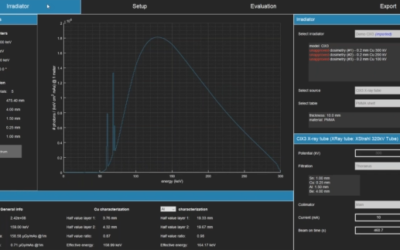PURPOSE:
To evaluate the impact of local superficial radiotherapy with respect to local control, survival, and toxicity for patients with “minimal” stage IA cutaneous T-cell lymphoma (Mycosis Fungoides).
METHODS AND MATERIALS:
Between 1954 and 1996 a total of 21 patients were identified as receiving curative local superficial radiation (LSR) for minimal stage IA Mycosis Fungoides. All patients had pathologic documentation at diagnosis and at the time of suspected recurrences and no patient received prior radiation. Ten patients were treated with 100-280 Kv (A1), and 11 with 4-12 Mev electrons. Nine patients had failed prior therapies (steroids: 4; PUVA: 3; BCNU: 1; UVB: 1) and six received adjuvant therapy after completion of LSR (PUVA: 5; steroids: 1). Minimum follow-up was 1 year.
RESULTS:
The median follow-up was 36 months (13-246), and the median age when commencing LSR was 55 years (27-73). All patients were Caucasian, and 11 were male. A total of 32 lesions were identified in 21 patients; 13 patients had unilesional disease, 5 patients had 2 lesions, and 3 had 3 lesions. A total of 33 fields were treated with a median treatment surface area of 107 cm2 (11-785). The median surface dose was 20 Gy (6-40), with 17 patients receiving a dose > or = 20 Gy. The median fraction number was 5 for all fields, but was 10 for the fields receiving 20-40 Gy. The complete response rate was 97%, and all patients were alive at last evaluation. All failures were cutaneous. One patient had persistent disease (treated with 6 Gy), and three failed locally at 52 months (8 Gy), 16 months (20 Gy), and 4 months (20 Gy). None of these patients received adjuvant therapy. Two patients failed in distant skin sites and were salvaged. The actuarial DFS for the entire group at 5 and 10 years was 75 and 64%, respectively, with local control of 75% at both time intervals. For the 13 patients with unilesional disease, the DFS was 85% at 10 years. For those treated with doses > or = 20 Gy, the DFS was 91% as was local control (no distant failures). Toxicity included mild erythema and dry desquamation acutely. Chronic toxicity included dermatitis [2], and telangiectasia [1]. No second cutaneous malignancies or hematologic toxicity was noted.
CONCLUSION:
Patients with minimal Stage IA Mycosis Fungoides may be managed effectively with local superficial radiation alone without adjuvant therapy. Distant failure is unusual and patients should receive a minimum surface dose of 20 Gy, which offers excellent local control. Sequalae of therapy are minimal.
Wilson LD, Kacinski BM & Jones GW.







